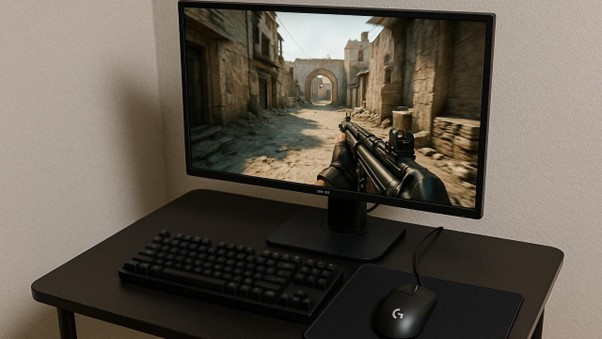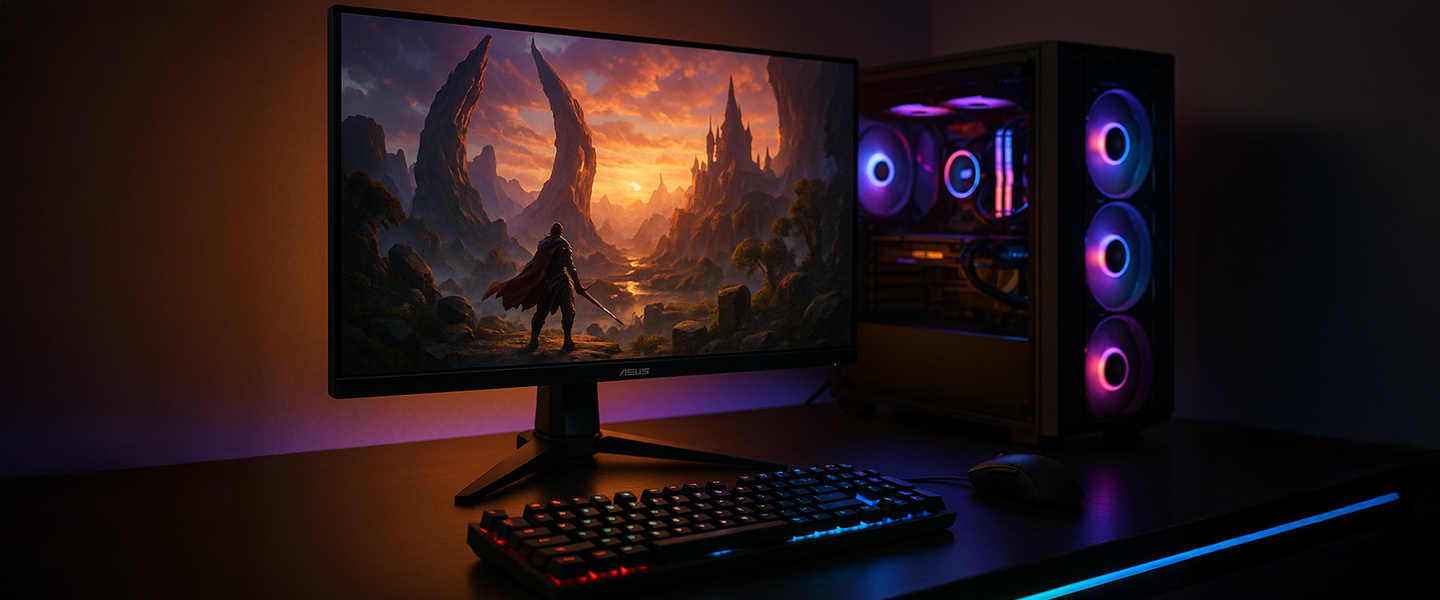When it comes to gaming, resolution can make or break your experience. But with so many display options out there, it’s hard to know what’s actually worth paying for.
Is 4K really that much better? Is 1080p still enough in 2025? Let’s break down what each resolution offers and how to pick the one that fits your setup.
What Resolution Actually Means
Resolution refers to the number of pixels on your screen. More pixels mean sharper images, but they also demand more from your graphics card.
Here’s the quick breakdown:
- 1080p (Full HD): 1920×1080 pixels
- 1440p (QHD or 2K): 2560×1440 pixels
- 4K (UHD): 3840×2160 pixels
That’s a big jump, 4K has four times the pixels of 1080p. But more pixels don’t always equal a better gaming experience if your hardware can’t keep up.
1080p: The Reliable All-Rounder
1080p is still the standard for most gamers. It’s the easiest on your GPU, which means higher frame rates and smoother gameplay — especially in competitive titles like Valorant, Apex Legends, or Fortnite.
Monitors are affordable, graphic cards don’t struggle, and even mid-range laptops can handle it easily.
If you care more about speed and performance than pure detail, 1080p remains a solid choice. It’s also great for budget builds and high refresh rate monitors (think 144Hz or 240Hz) where responsiveness matters most.
Ideal for: Competitive gamers, budget builds, esports setups.


1440p: The Sweet Spot
For many players, 1440p hits the perfect middle ground. You get noticeably sharper visuals than 1080p without the huge performance hit of 4K.
Modern GPUs handle 1440p comfortably, and with adaptive sync (G-Sync or FreeSync), you can still enjoy smooth, tear-free gameplay at high frame rates.
It’s also becoming the new “standard” for gaming monitors, with a wide range of 27-inch displays that balance clarity and size nicely.
Ideal for: Gamers who want a big visual upgrade but still value performance.
4K: The Visual Showcase
4K gaming looks incredible — razor-sharp detail, lifelike textures, and cinematic presentation. But it’s also demanding. You’ll need a high-end GPU (like an RTX 4080 or Radeon 7900 XTX) to hit consistent frame rates at this resolution, especially in modern AAA titles.
Monitors and TVs that support 4K are now more affordable, but don’t overlook refresh rate. Many 4K displays cap at 60–120Hz, which can feel sluggish compared to 144Hz or higher.
4K is best suited for gamers who prioritise visual immersion and play slower, story-driven games — where image quality matters more than twitch response.
Ideal for: Enthusiasts, console gamers with 4K TVs, and single-player fans.


Performance vs Visuals: Finding Your Balance
Higher resolution always looks better, but it also puts pressure on your system. Here’s a general rule of thumb:
- Want maximum FPS? Go 1080p.
- Want the best mix of performance and visuals?
- Want ultimate visual fidelity and have the hardware for it?
If you’re unsure, consider your GPU power, monitor size, and refresh rate. A powerful PC with a 27-inch monitor often shines at 1440p; a living-room setup with a 55-inch 4K TV makes more sense for 4K.
Final Thoughts
There’s no single “best” resolution — it all comes down to what you value more: smooth gameplay or jaw-dropping visuals.
1080p is reliable, 1440p is balanced, and 4K is stunning but demanding. Choose based on your gear and the types of games you love, and you’ll get the best experience for your setup.







